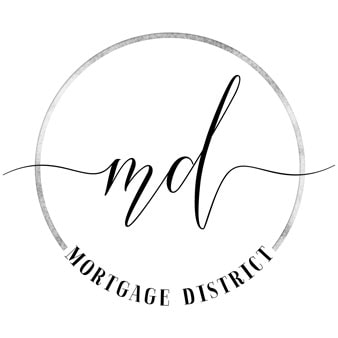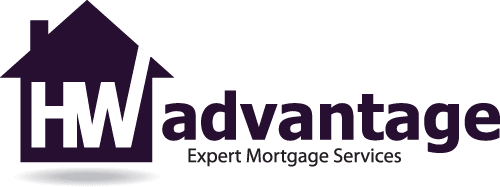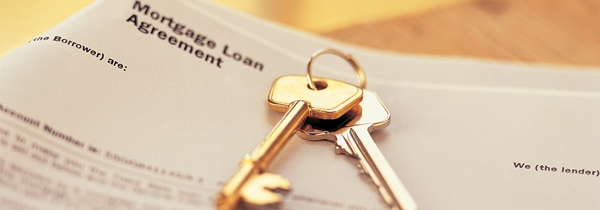When buying an investment property, there are many different things to consider, such as location, cost, maintenance and how much money you make. But one thing you may overlook, especially if this is your first time purchasing an investment property, is the type of insurance you’ll need to protect from any unforeseen cash-sucking incidents.
By: Mark David
“Insurance equates risk,” says Frank Stigter, insurance broker and account executive at Canada Brokerlink in a Toronto office. “So you buy insurance because of how much you’re willing to risk.”
There are many unexpected problems that could arise on and from your real estate, but there are four main risk categories to explore whether your investment is commercial or residential.
Property risk
Property risk is the most obvious coverage you, as an investor, would consider since it deals with damages to your property, such as fire, theft, vandalism, sewer backup and lightning. In recent years in Canada, insurance companies have found water damage to be the most common claim, causing standard policies to actually exclude it or limit the amount that can be claimed. In Ontario, a similar problem has risen with sewer backup, as it’s become the No. 1 driver for claims in the province. Insurance companies have started to limit sewer backup claims to $5,000 or $10,000 when the average cost is around $25,000.
Situations like this drive policy choice. And the choices are typically either named-peril or broad-form policy. With named-peril policy, the company lists the events and types of damages it will cover, which means if a freak incident occurs and it’s not written on your policy, you get zero dollars. A broad-form policy, on the other hand, covers all risks and simply lists exclusions. For example, in one case, a dead body wasn’t found in a split home for 10 days and it cost $40,000 to clean up. If your named-peril policy does not include “finding of dead body,” you’re paying the Sunshine Cleaning crew out of pocket. But as long as the all-risks policy doesn’t exclude removal of dead body, you’ll be happy you decided to shell out a few more bucks a month for more inclusive coverage.
Thus, common sense will dictate that between a named-peril and a broad-form policy (also known as an all-risks policy), it’s best to opt for the latter. “You can buy a Cadillac policy or you can buy a Chevy policy,” says Stigter. “I won’t sell named peril unless the client really wants it because it’s so limited.”
Another type of property insurance you may consider is referred to as boiler and machinery, also known as equipment breakdown insurance. Some say the name can be misleading. “Some people say, ‘I don’t have a boiler, I don’t need this insurance,’” says Lou Fisch, partner and vice-president of HKMB Hub International insurance brokers, headquartered in Toronto. “But what you’re insuring is the mechanical or electrical breakdown of almost any equipment you have, including a furnace or air-conditioning system.” So while an all-risk peril policy potentially covers what happens to your building, boiler and machinery covers problems that are generated within the building.
Loss of use of the property
Rental income insurance is perhaps the most important coverage for the real estate investor. After all, the whole point to investing in property is to make money. So if your building burns down, you may have the property insurance to claim the expenses to rebuild it, but you need rental income insurance to make up for the loss of use. “Unless you have tons of cash, you probably have mortgage payments to make,” says Fisch. “And even if you don’t have a mortgage to pay, you still want the revenue from that property.”
The people who typically don’t buy this insurance believe they are saving money, but fail to understand the importance of insuring their finance stream. It is the most cost-effective way to protect against risk because it’s mere pennies on the dollar—the cost of insurance is a fraction of the amount of revenue being generated by the property.
When purchasing rental income insurance, you want to be aware of the indemnity period. Indemnity refers to the time of property loss to when you are able to rent out the property again or when the maximum number of months that you are covered is reached, whichever happens first.
“For example, while repairs are taking place, a tenant obviously isn’t going to live on the street for six months,” says Fisch. “They’re going to find another place to live, and then when restoration is complete, your apartment or whatever type of rental property you have, will be vacant. So instead of paying out of pocket, the insurance company will pay for this loss of rent up to however many months you purchased or till you find another tenant.”
A typical indemnity period is 12 months. But in case your building has special construction needs if the worst was to happen and you had to rebuild that may require an extra indemnity period of 18 or 24 months.
Liability
Liability insurance refers to accidents and injuries that happen to other people on your property or because of your property. It is the most common risk occurrence. For instance, if a woman is walking by your premises, slips and falls on ice and suffers a head injury, she can sue you for any loss of income if she had to take time off work. This would be considered a third-party bodily injury claim.
“Proper risk management strategy would be a documented shovelling and salting log of when the walkway is inspected and cleared by your premises manager,” says Fisch. “Or hiring a third party that is contractually obligated to maintain the walkway, and also has their own general liability insurance to cover the potential claim.”
Another type of liability is third-party property damage. If a resident’s car is entering a covered parking garage and the automated garage door comes down on to the vehicle before it has cleared the entranceway, you would ultimately be responsible for cost of repairs to the car even if the owner has physical damage insurance on it. “The auto’s insurer would seek compensation from your insurance company as the negligent party causing the loss,” adds Fisch.
Unlike rental income insurance, you can’t get away with not buying commercial general liability coverage. When you purchase the mortgage for your investment property, the bank or lender will specify what kind of insurance it requires from you and the minimum amount, and no lender omits liability coverage. “Normally, we don’t see anything less than $2 million,” says Kim Stewart, account manager at HKMB. “But it could be $5 million or $10 million.”
Human capital
Human capital refers to a less common type of insurance risk associated with real estate investments because it deals with the people who own the building, rather than the building itself. It’s all about life’s uncertainties. “If you are in a commercial investment with other partners and one of the partners dies prematurely, you’ll want an injection of money to cover the mortgage payments and tax liabilities,” says Dirk Moerkens, executive vice-president and partner of Toole Peet Insurance Brokers in Calgary, Alberta.
Essentially what you’re buying is a life insurance policy to fund business liabilities rather than personal ones. Some of the mortgage payments may have been tied to and paid by the now-deceased partner, and if your revenue stream still doesn’t cover it all, this insurance policy will help take care of it. “Also, if over the years, your investment increased in value, Canada Revenue Agency wants the capital gains tax now that you’re deceased. Not tomorrow—now,” adds Moerkens.
“And if your money is all tied up in property, this insurance covers that tax liability. And then the property doesn’t have to be sold at a potential loss.”
Although this insurance may not be mandated in your mortgage agreement, you may want to consider it. It depends on how big your investment is, or if family members may be stuck with your business liabilities.
Though these are the four main risk categories to consider when purchasing insurance coverage for your real estate property, there are a host of different subsets and possibilities under each one. For unqualified confidence in these matters you’ll want to deal with an experienced professional who specializes in commercial and residential property. “The absolute best protection is the knowledge of an insurance broker,” says Moerkens.
You are likely to hire a lawyer to handle the legal intricacies of your property, and an accountant to organize your finances, it only makes sense to include an insurance professional who you trust. It is also always important to shop around, and with a basic understanding of what you may encounter, you’ll be better able to find the broker that’s right for you and your investment.
What else to look for in your policy:
Co-insurance clause
Co-insurance is one of the most misunderstood insurance principals. Most standard commercial property insurance policies contain an 80 or 90 per cent co-insurance clause. This clause requires that insurance be maintained to at least 80 or 90 per cent of the insurable value of the property at the time of loss. If the amount of insurance fulfills the co-insurance condition, any loss is paid in full up to the policy limit.
Bylaw insurance
Most major property losses do not destroy the entire building. Many jurisdictions have bylaws that may require you to demolish the remaining portion of the building, or one that states your building must be rebuilt to different specifications according to current building code requirements. All standard policies exclude the extra costs associated with the operation of a bylaw. The three areas of potential financial loss that can be added to your policy are the value of the Undamaged Portion, the Debris Removal of the Undamaged Portion and the Increased Cost of Repair.
Making a claim
If an incident happens on your property where you’ll have to make a claim, you’ll want to contact your insurance agent so he can best advise what to do. Insurance brokers have claim satisfaction ratings, which separates the good negotiators who carry weight with insurance companies from those who don’t. You’ll want to submit your claim as soon as possible after the damage has occurred. Depending on the size of the claim, a claims adjuster from the insurance company may come to the property to assess the damages.
Environmental impairment liability
Damage caused by pollution has been excluded from policies for many years and is a growing problem. The following are examples of what could be excluded by the pollution restriction in a standard policy but can be covered by an environmental impairment liability policy:
- Gas furnace malfunctions in an office building and fumes escape causing sickness or death.
- Gas water heater malfunctions in a beauty shop and exhaust fumes cause customers to be taken to hospital.
- Land developer burning trees and brush. Wind changes, blowing smoke across the highway, which causes head-on collision.
- Above-ground piping ruptures and releases chlorine gas into the air. Wind blows gas into a neighbouring factory, causing injury and death.
- Contractor brings gasoline tank to job site. Tank legs collapse when tank is filled and the tank tips over. Gasoline runs onto neighbour’s property and into stream.
- An electrical short causes insulation to smoulder in an apartment building. Fumes cause sickness and death.
- Forklift operator, with vision blocked by load, runs into large transformer. Oil gushes across alley into basement of adjacent building. Loss of use of the building until the contamination is cleaned up.


